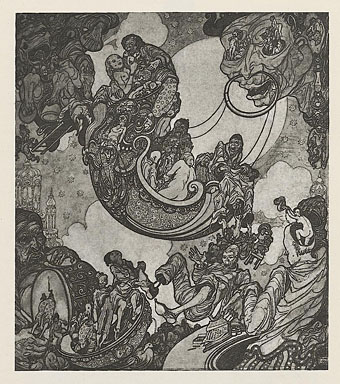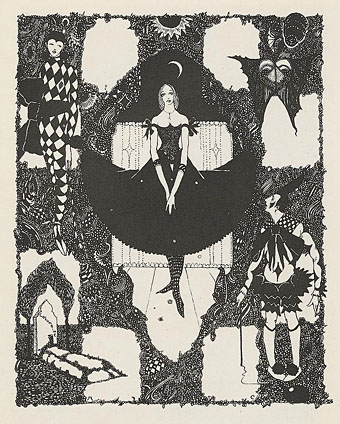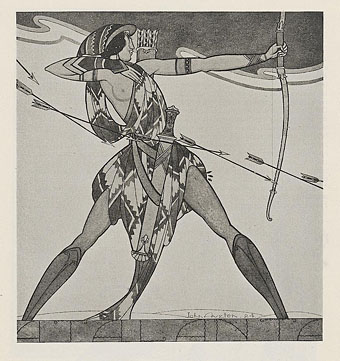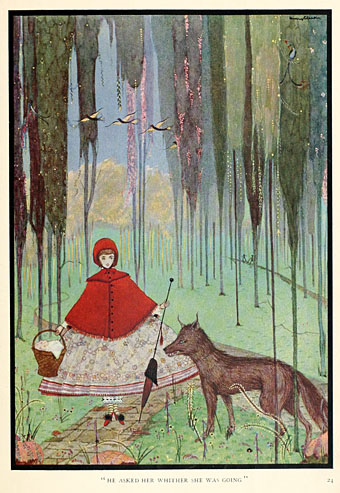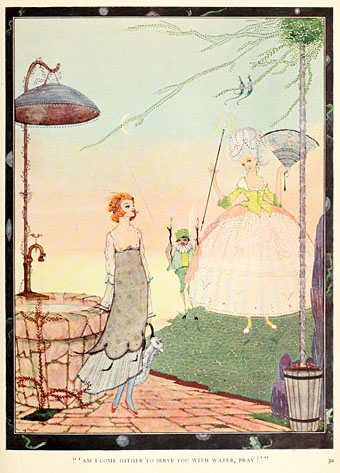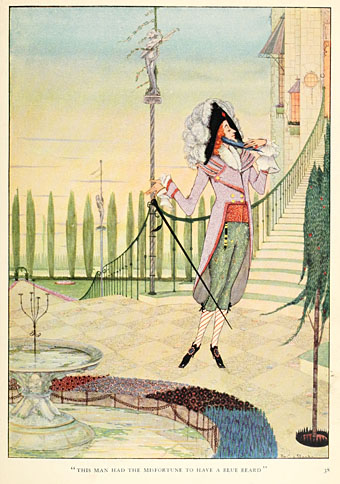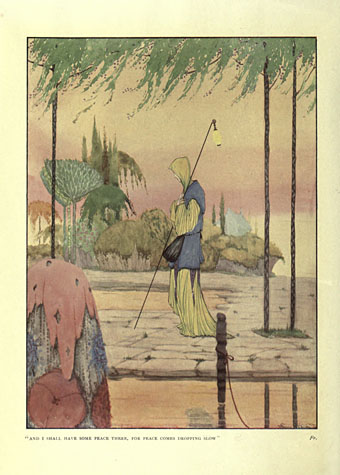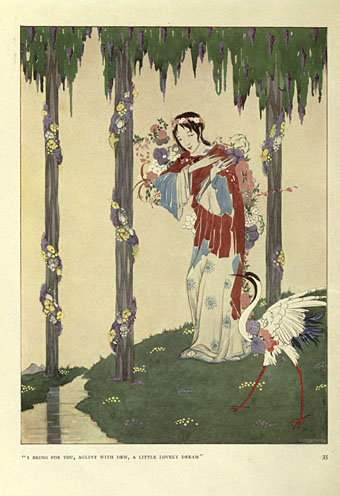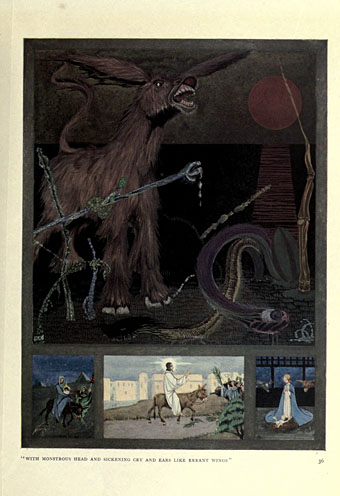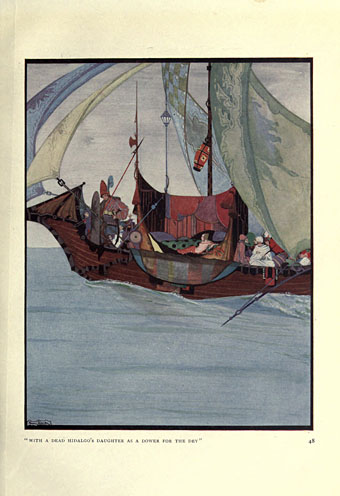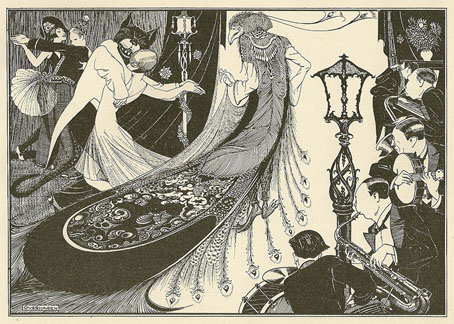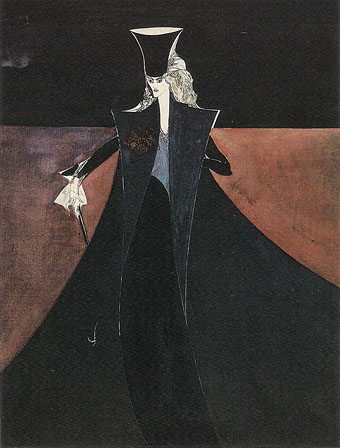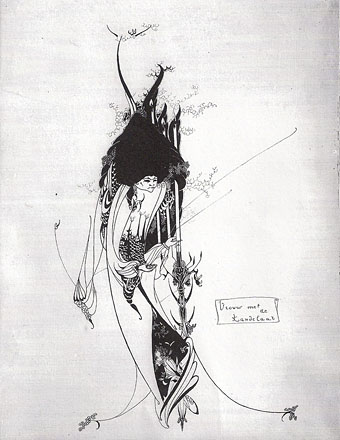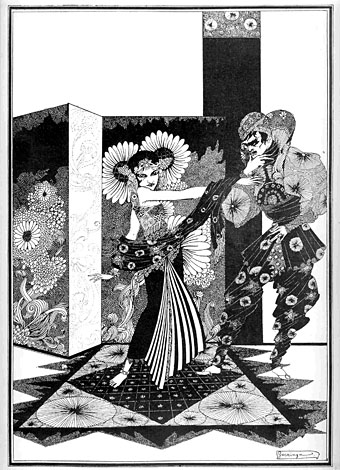The Swing by Alan Odle.
The University of Heidelberg has for some time now had several years of British art magazine The Studio in its archive but I’ve yet to delve fully into the later issues. These illustrations are from two articles from the volumes covering the year 1925, both of which feature the exceptional Irish artist Harry Clarke. In the first piece Clarke is present along with two contemporaries, John Austen and Alan Odle; the second is a review by novelist Dorothy M. Richardson (Alan Odle’s wife) of Clarke’s illustrations for Goethe’s Faust. All three artists owed an artistic debt to Aubrey Beardsley, and an earlier number of The Studio features a drawing by John Austen of Scheherazade in his Beardsley-derived style. (Thanks to Nick for the tip!)
Columbine by Harry Clarke.
Atalanta in Calydon by John Austen.

